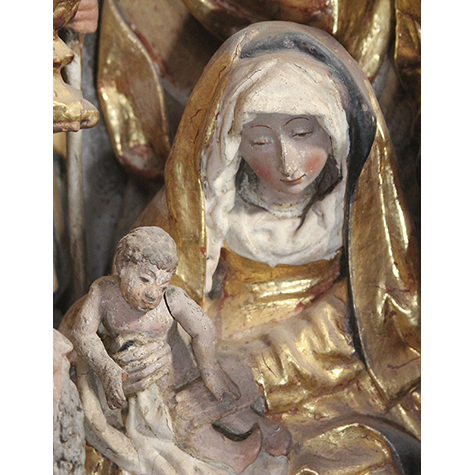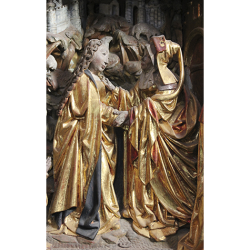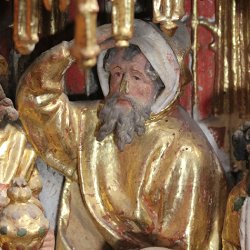Catalogue
ALTARPIECE OF THE LIFE OF THE VIRGIN AND THE CHILDHOOD OF CHRIST
STYLE
Although this altarpiece has hallmarks from Antwerp, some of its scenes, such as the Adoration of the Magi or the Annunciation, evoke in their distribution and the attitudes of their characters works from the workshops of Brussels that were active in the early years of the 16th Century (Saluces, Stragnas), complicated here by the addition of new figures. Its characterisations, however, are not as subtle. Except in the case of the Epiphany, where her face with almond-shaped eyes is more finely rendered, Mary is portrayed with a plump face, at times melancholy, vacant at others, but always with large eyes and heavy eyelids, similar to the altarpieces of Jader or those in the Swedish History Museum in Stockholm, although with slightly more ruffled hair. The male characters are more varied, some with serious expressions and others almost burlesque. All are dressed in fabric with folds that are stiff and dense, but not crisp; the puffed sleeves of the figure behind Melchior stand out for their modernity.



